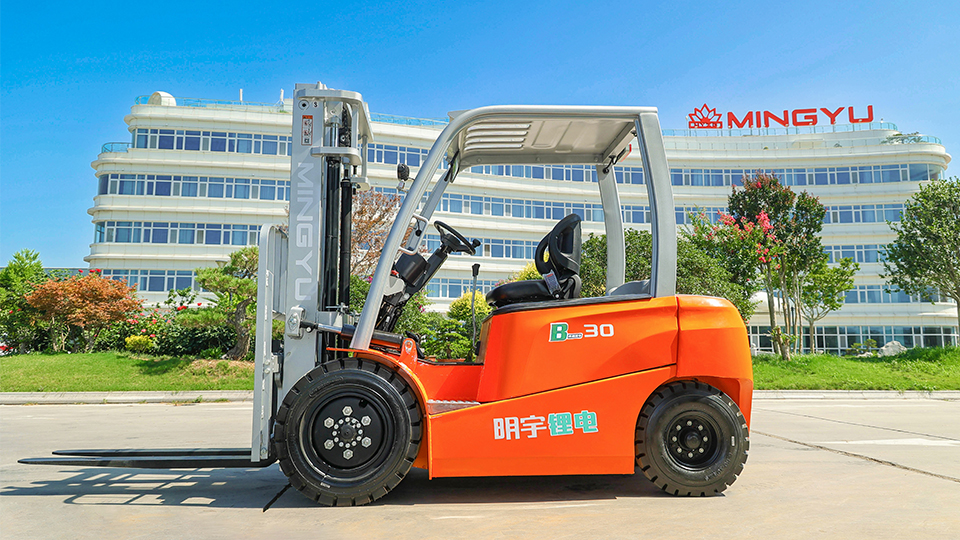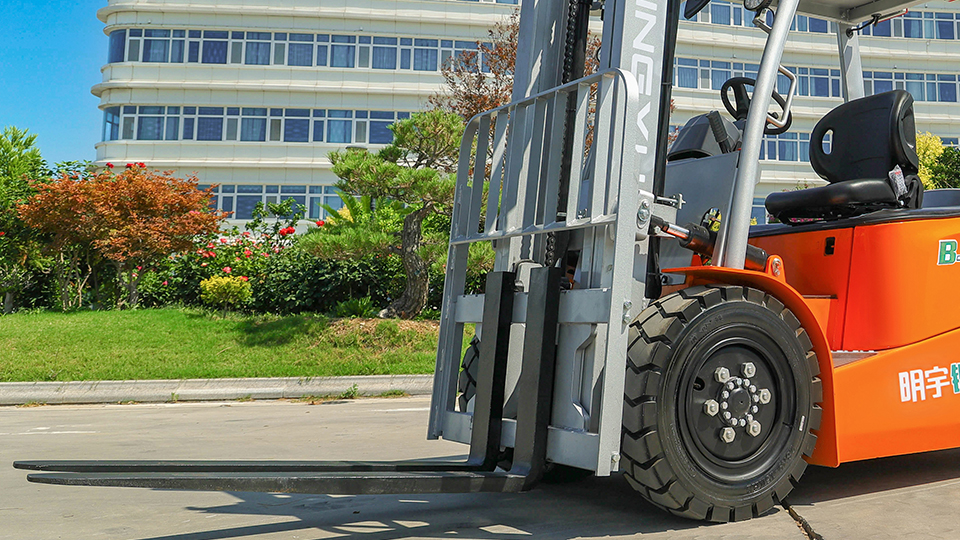
Selling a forklift can be a strategic move for businesses looking to upgrade their equipment or liquidate assets. However, knowing where and how to sell your forklift to maximize its value requires careful planning and consideration. This comprehensive guide will walk you through the process of selling your forklift, from assessing its condition and determining its value to exploring various selling platforms and finalizing the transaction. Whether you're dealing with one unit or an entire fleet, understanding these steps will help ensure a smooth and profitable sale.
Assessing Your Forklift's Condition
Before listing your forklift for sale, it’s essential to thoroughly assess its condition. This assessment will not only help determine the asking price but also identify any necessary repairs or maintenance that could enhance the machine’s value. Key areas to evaluate include:
Mechanical Condition: Check the engine, transmission, hydraulics, and other mechanical components. Any signs of wear or malfunction should be noted.
Operational Performance: Test the forklift under load to ensure it operates smoothly and safely. Pay attention to lifting capacity, stability, and control responsiveness.

Safety Features: Inspect safety features such as seat belts, lights, alarms, and backup cameras. Ensuring these are functional can make the forklift more appealing to potential buyers.
Appearance: While cosmetic issues may not affect functionality, they can impact perceived value. Clean the forklift thoroughly and address any visible damage like dents or rust.
Once you have a clear picture of your forklift’s condition, you can proceed to the next step: determining its value.
Determining the Value of Your Forklift
Accurately valuing your forklift is crucial for setting a realistic asking price that attracts buyers while ensuring you receive fair compensation. Several factors influence the value of a used forklift:
Brand and Model: Certain brands and models hold their value better than others. Research current market prices for similar makes and models to get a baseline figure.
Age and Hours: The age of the forklift and the number of operating hours significantly impact its value. Lower hour machines generally command higher prices.
Condition: As previously assessed, the overall condition of the forklift—including mechanical performance, appearance, and maintenance history—affects its market value.
Market Demand: Supply and demand dynamics within your local area can influence pricing. For example, if there’s high demand for electric forklifts due to environmental regulations, units meeting this criteria may fetch higher prices.
To get a professional opinion, consider hiring an appraiser who specializes in industrial equipment. An expert evaluation can provide an accurate valuation based on current market conditions.
Preparing Your Forklift for Sale
Preparing your forklift for sale involves more than just cleaning and repairing it. Here are some additional steps to take:
Documentation: Gather all relevant documents, including service records, warranty information, and any certifications. These documents can reassure potential buyers about the forklift’s history and reliability.
Photographs: Take high-quality photos of the forklift from multiple angles, highlighting its key features and any unique selling points. Clear, well-lit images can attract more interest from potential buyers.
Maintenance: Perform any necessary maintenance tasks before listing the forklift. A well-maintained machine is more attractive to buyers and can justify a higher asking price.
By taking these preparatory steps, you’ll present your forklift in the best possible light, increasing the likelihood of a quick and profitable sale.
Choosing the Right Selling Platform
The platform you choose to sell your forklift electric can greatly influence the speed and profitability of the sale. Below are several options to consider:
Forklift Dealers
Pros: Forklift dealers often have established networks of buyers and can offer competitive prices. They may also provide trade-in options if you’re looking to purchase a new or used forklift.
Cons: Dealers typically take a commission, which can reduce your net profit. Additionally, they may not accept all types of forklifts, especially those in poor condition.
Private Buyers
Pros: Selling directly to private buyers can yield higher profits since there’s no middleman involved. You can negotiate terms directly with the buyer.
Cons: Finding private buyers can be time-consuming and may require marketing efforts. There’s also a risk of encountering unreliable buyers.
Online Marketplaces
Pros: Platforms like eBay, Craigslist, and specialized industrial equipment websites (e.g., Equipment Trader) offer wide exposure to potential buyers. Listings are easy to create, and you can reach a global audience.
Cons: Competition can be fierce, and managing inquiries and negotiations can be labor-intensive. Be cautious of scams and fraudulent buyers.
Auction Sites
Pros: Auctions, both online and in-person, can generate excitement and drive up prices through bidding wars. Some popular platforms include Ritchie Bros. and IronPlanet.
Cons: There’s no guarantee of achieving your desired price, and auctions often come with seller fees. Additionally, preparing the forklift for auction can be costly and time-consuming.
Trade Shows and Industry Events
Pros: Participating in trade shows or industry events can connect you with serious buyers who are actively seeking equipment. Networking opportunities can lead to direct sales.
Cons: Attending these events can be expensive and time-consuming. There’s also the logistical challenge of transporting the forklift to the event.
Each platform has its advantages and drawbacks, so carefully weigh your options based on your specific needs and circumstances.
Marketing Your Forklift
Effective marketing is essential for attracting potential buyers and generating interest in your forklift. Here are some strategies to consider:
Create Detailed Listings: Whether you’re using online marketplaces, social media, or print ads, create detailed listings that highlight the forklift’s key features, specifications, and benefits. Include high-quality photos and videos to give buyers a comprehensive view.
Leverage Social Media: Promote your forklift on social media platforms like LinkedIn, Facebook, and Instagram. Join industry-specific groups and forums where potential buyers might be active.
Network Within Your Industry: Attend industry conferences, trade shows, and networking events to promote your forklift. Word-of-mouth referrals can be powerful tools in reaching interested buyers.
Offer Incentives: Consider offering incentives such as free delivery, extended warranties, or discounted maintenance services to sweeten the deal for potential buyers.
By implementing these marketing strategies, you can increase visibility and attract more qualified leads.

Negotiating and Finalizing the Sale
Once you’ve attracted potential buyers, the negotiation process begins. Here are some tips for successful negotiations:
Be Prepared: Know your bottom line and be prepared to walk away if the offer doesn’t meet your expectations. Having a clear understanding of your forklift’s value will give you confidence during negotiations.
Communicate Clearly: Provide transparent and honest communication throughout the negotiation process. Answer questions promptly and provide any additional information requested by the buyer.
Consider Payment Options: Discuss payment terms upfront, including whether you’ll accept cash, bank transfers, or financing arrangements. Ensure that the payment method is secure and reliable.
Finalize the Transaction: Once an agreement is reached, finalize the paperwork and arrange for the transfer of ownership. Make sure all necessary documentation is completed accurately and legally.
Post-Sale Considerations
After completing the sale, there are a few post-sale considerations to keep in mind:
Transfer of Ownership: Ensure that the title or bill of sale is properly transferred to the new owner. This legal document confirms the change in ownership and protects both parties.
Remove Personal Data: If your forklift contains any personal data (e.g., GPS tracking information), make sure to remove it before handing over the keys.
Follow-Up: After the sale, follow up with the buyer to ensure they’re satisfied with the forklift. Positive feedback can enhance your reputation and lead to future business opportunities.
Conclusion: Maximizing Your Forklift Resale Value
Selling a forklift involves several critical steps, from assessing its condition and determining its value to choosing the right selling platform and negotiating the best price. By following the guidelines outlined in this article, you can maximize the resale value of your forklift and complete the transaction efficiently. Remember, thorough preparation, effective marketing, and strategic negotiation are key to achieving a successful and profitable sale. Whether you’re parting ways with a single unit or an entire fleet, taking the time to understand the market and present your forklift in the best possible light will pay dividends in the end.
Name: selena
Mobile:+86-13176910558
Tel:+86-0535-2090977
Whatsapp:8613181602336
Email:vip@mingyuforklift.com
Add:Xiaqiu Town, Laizhou, Yantai City, Shandong Province, China